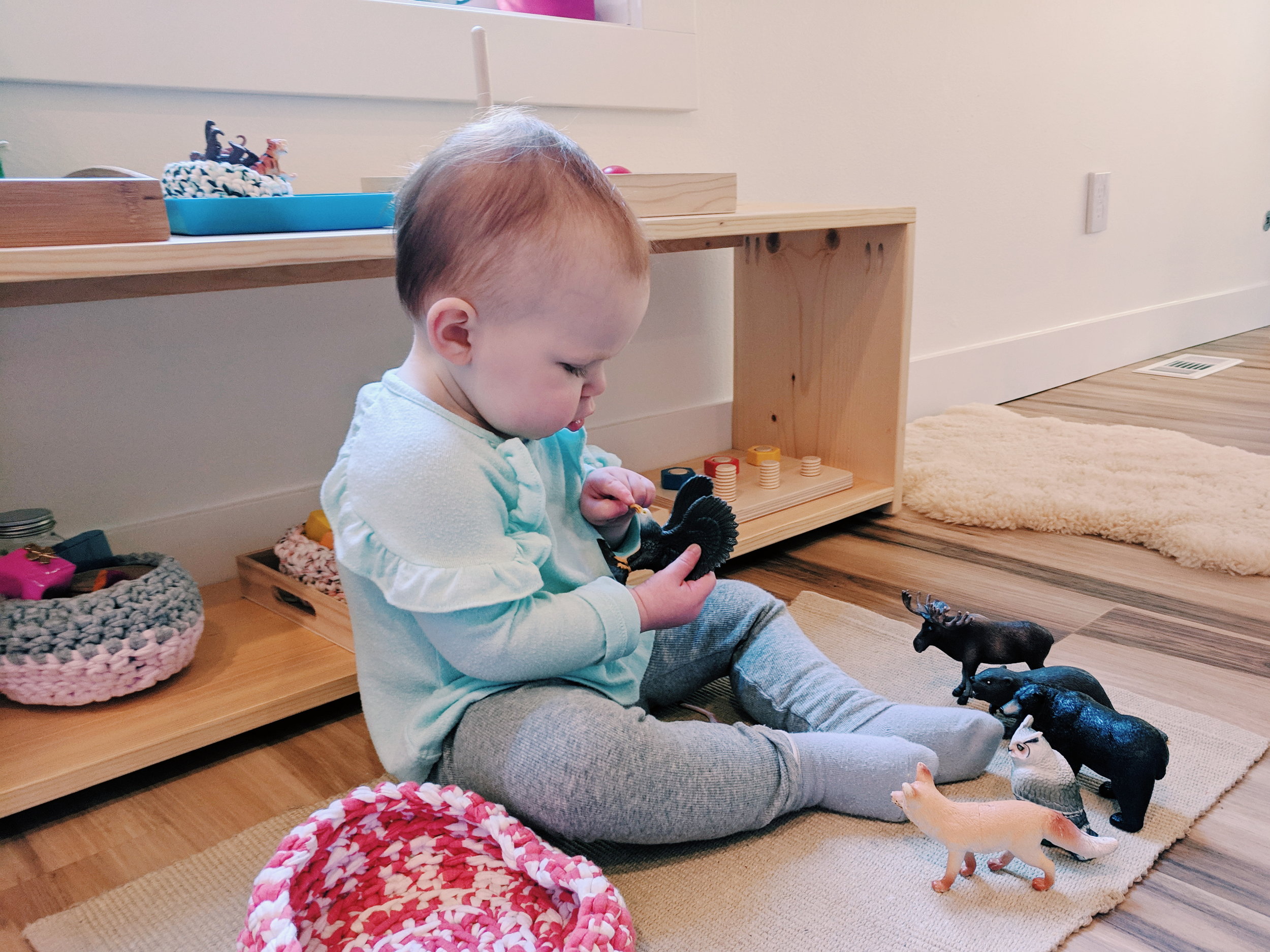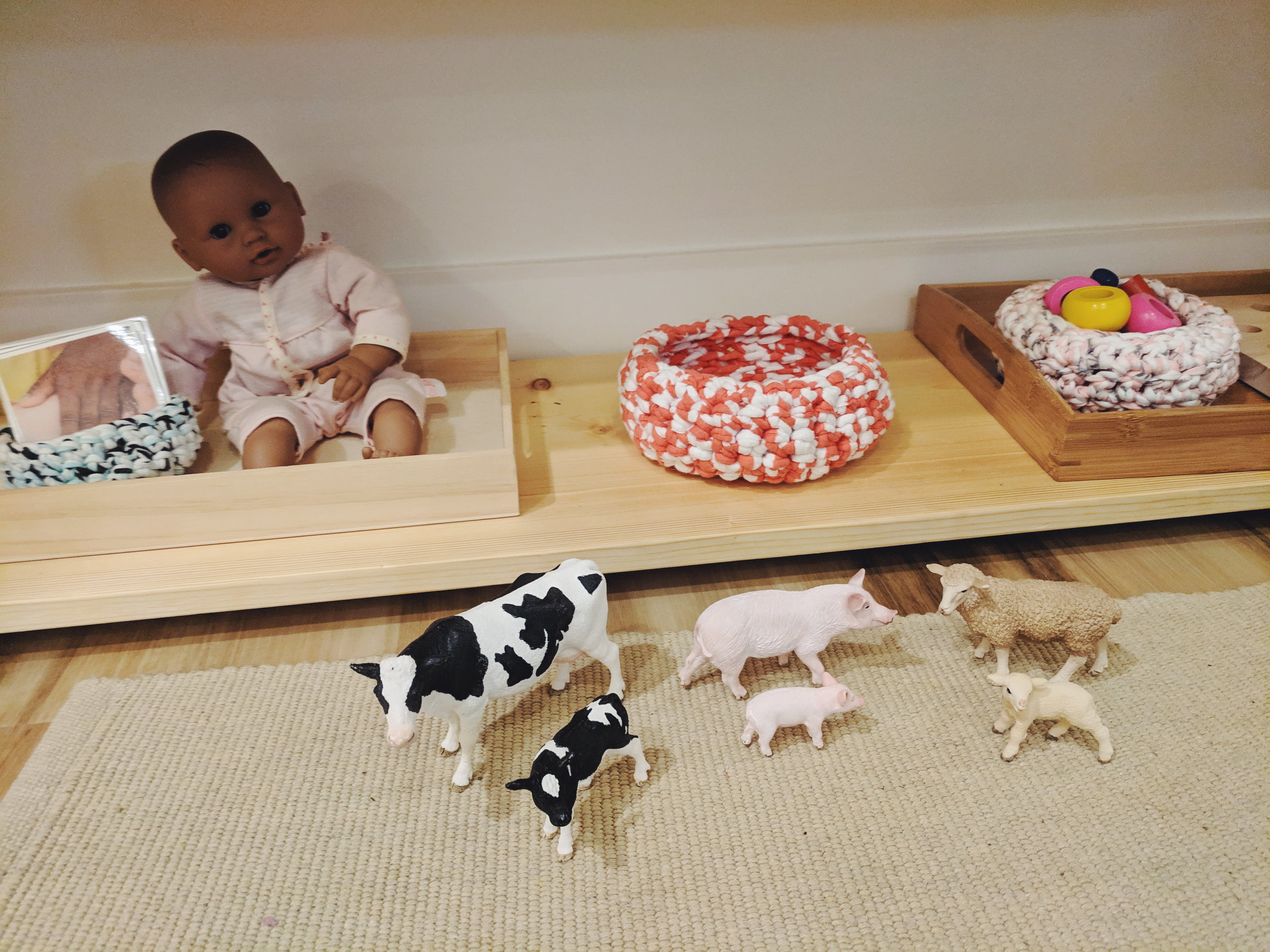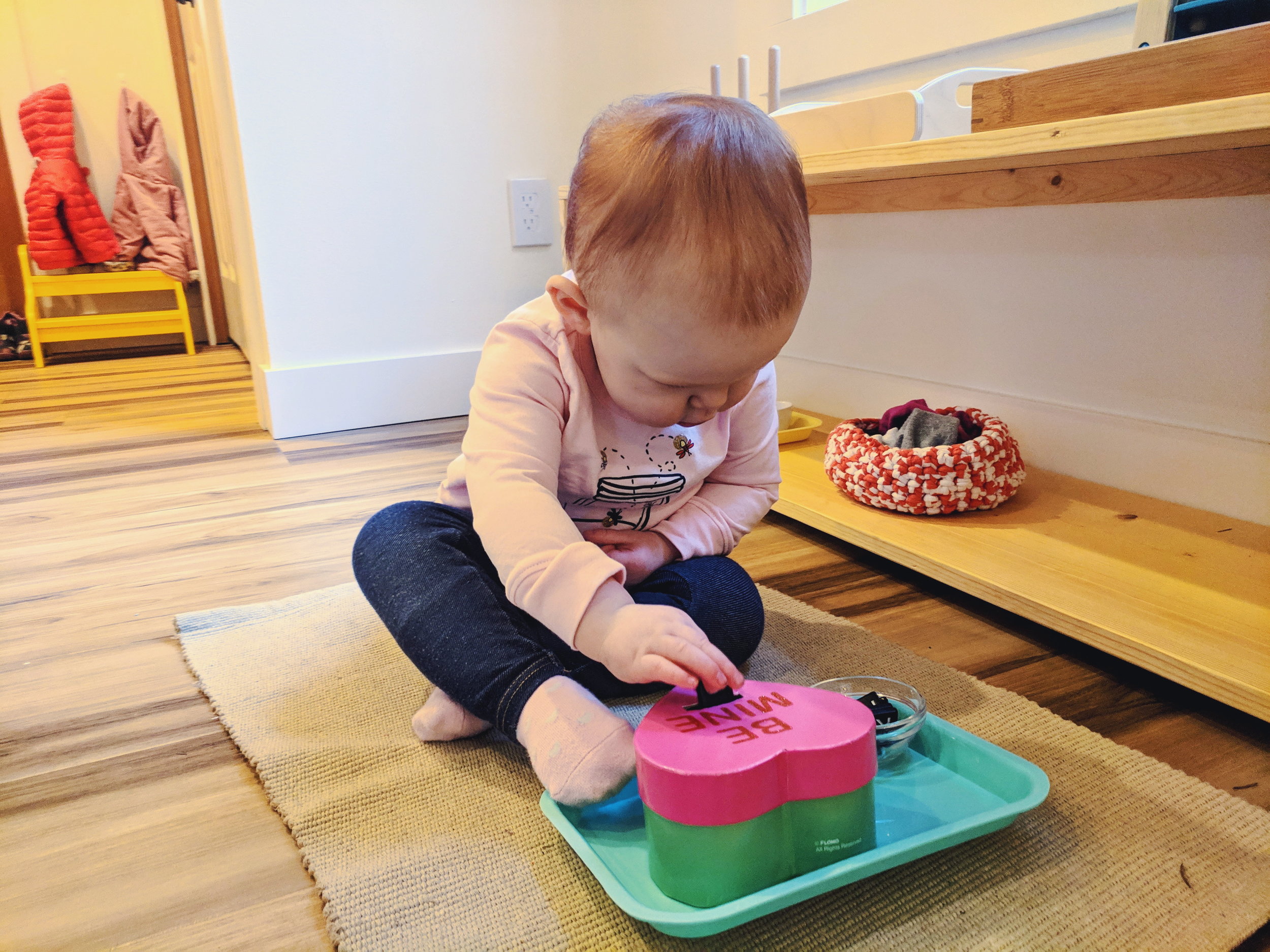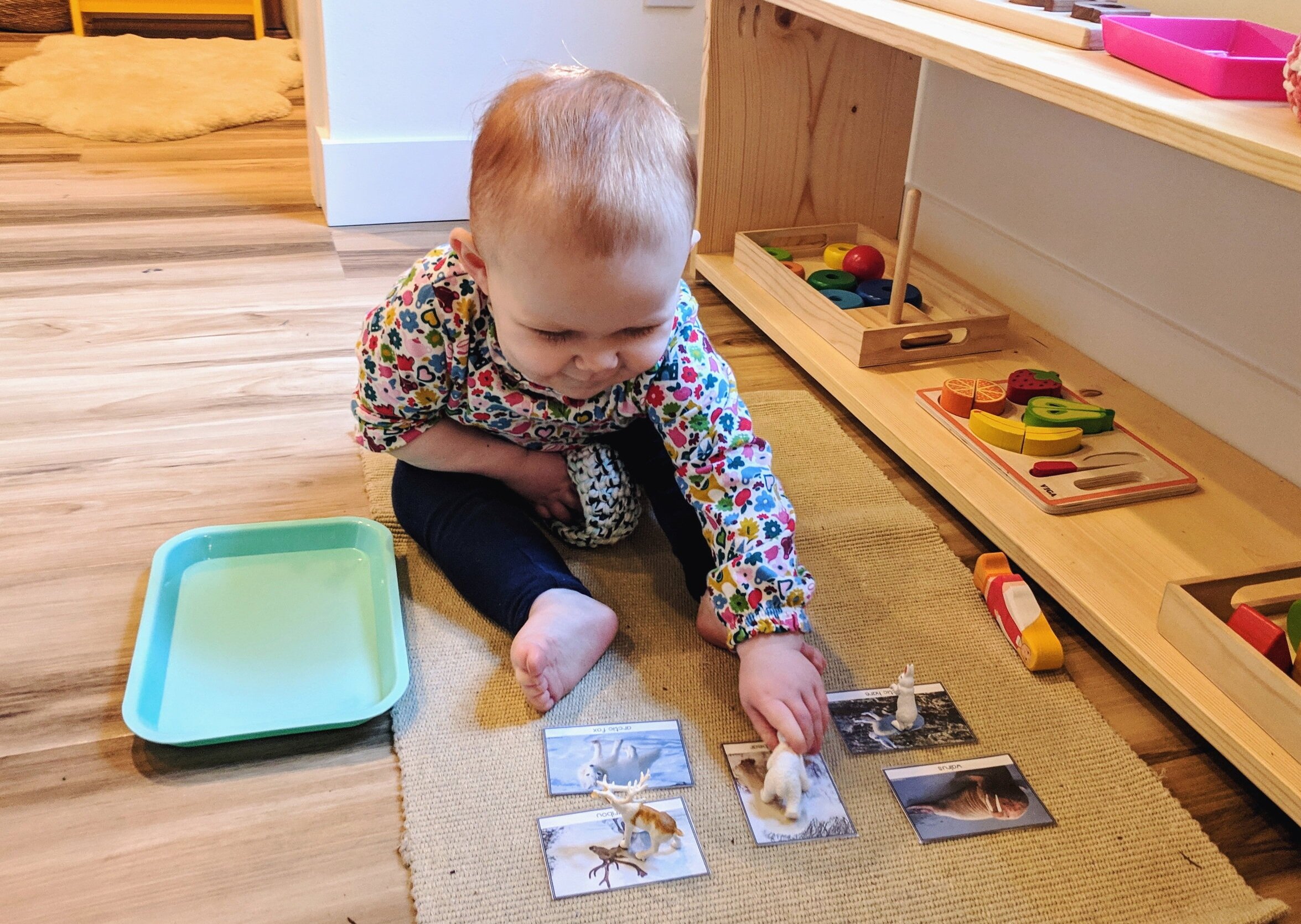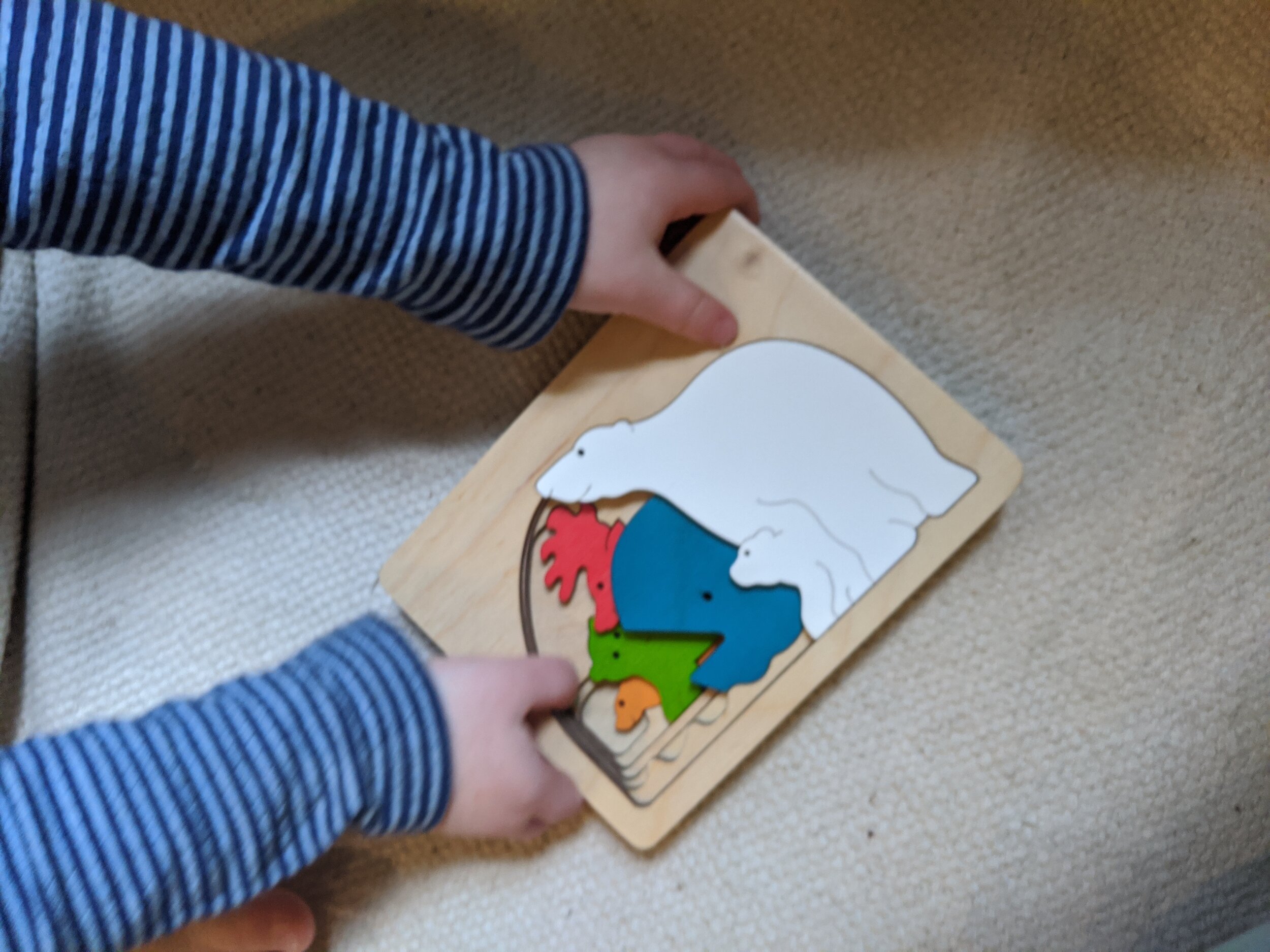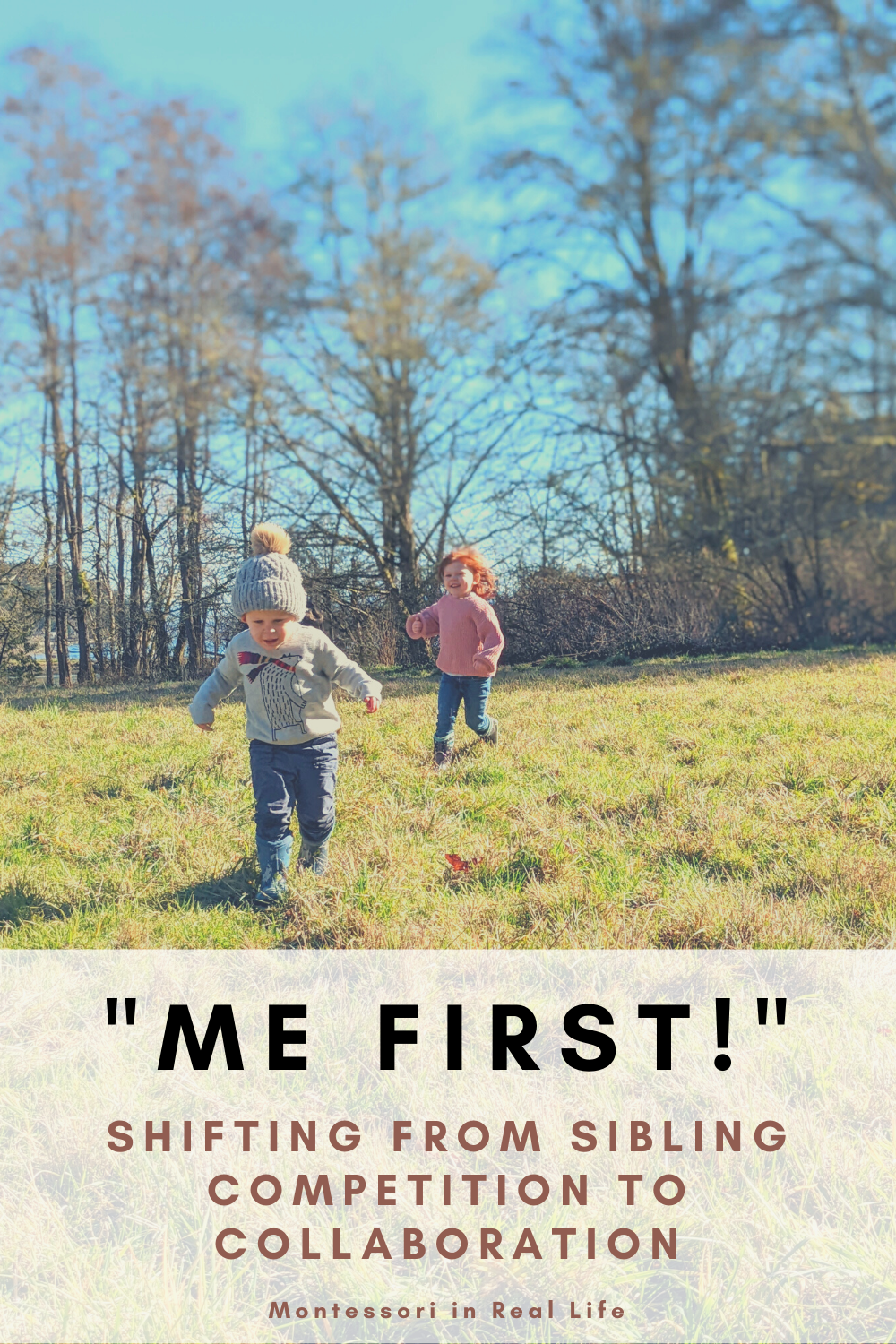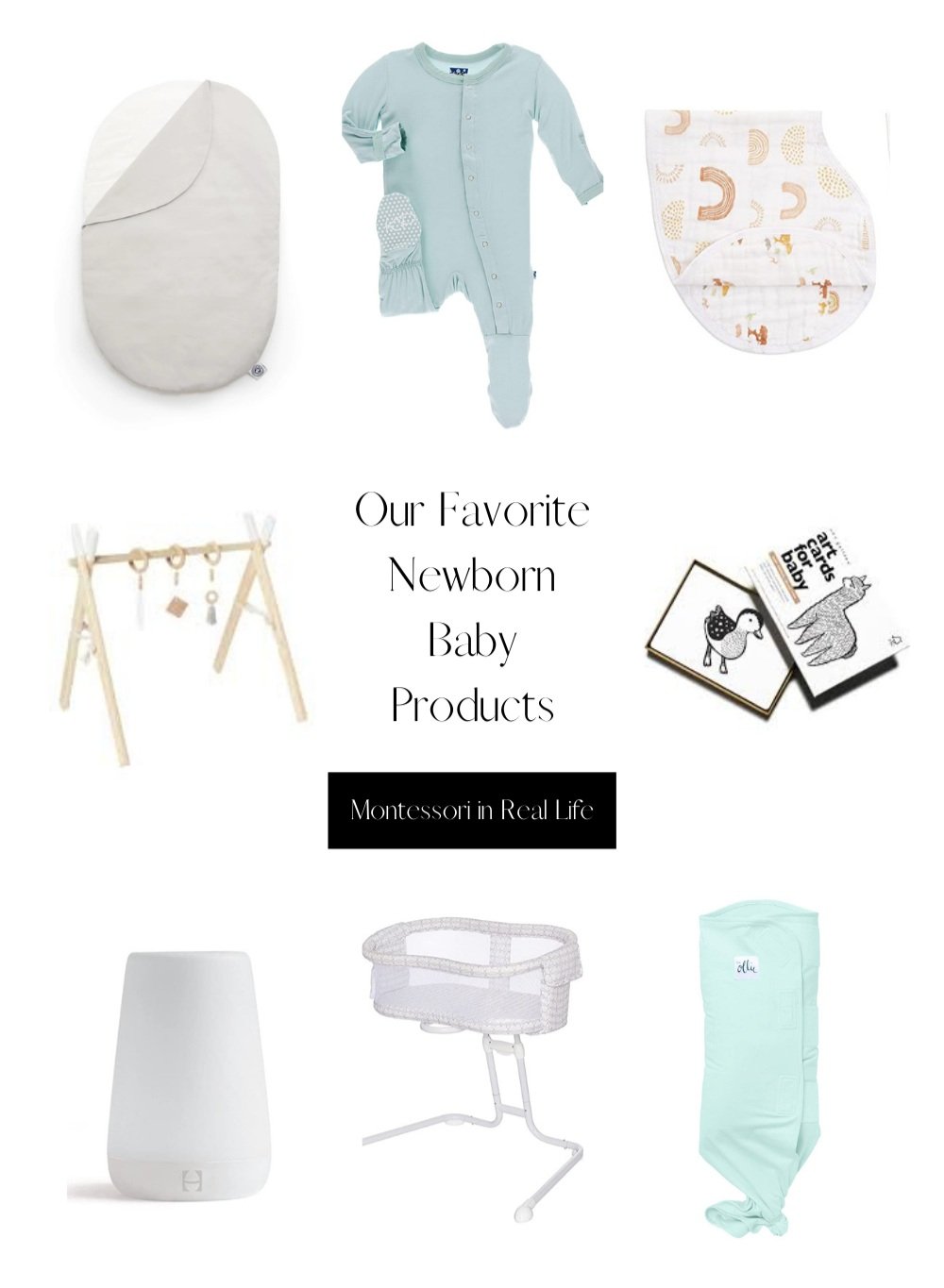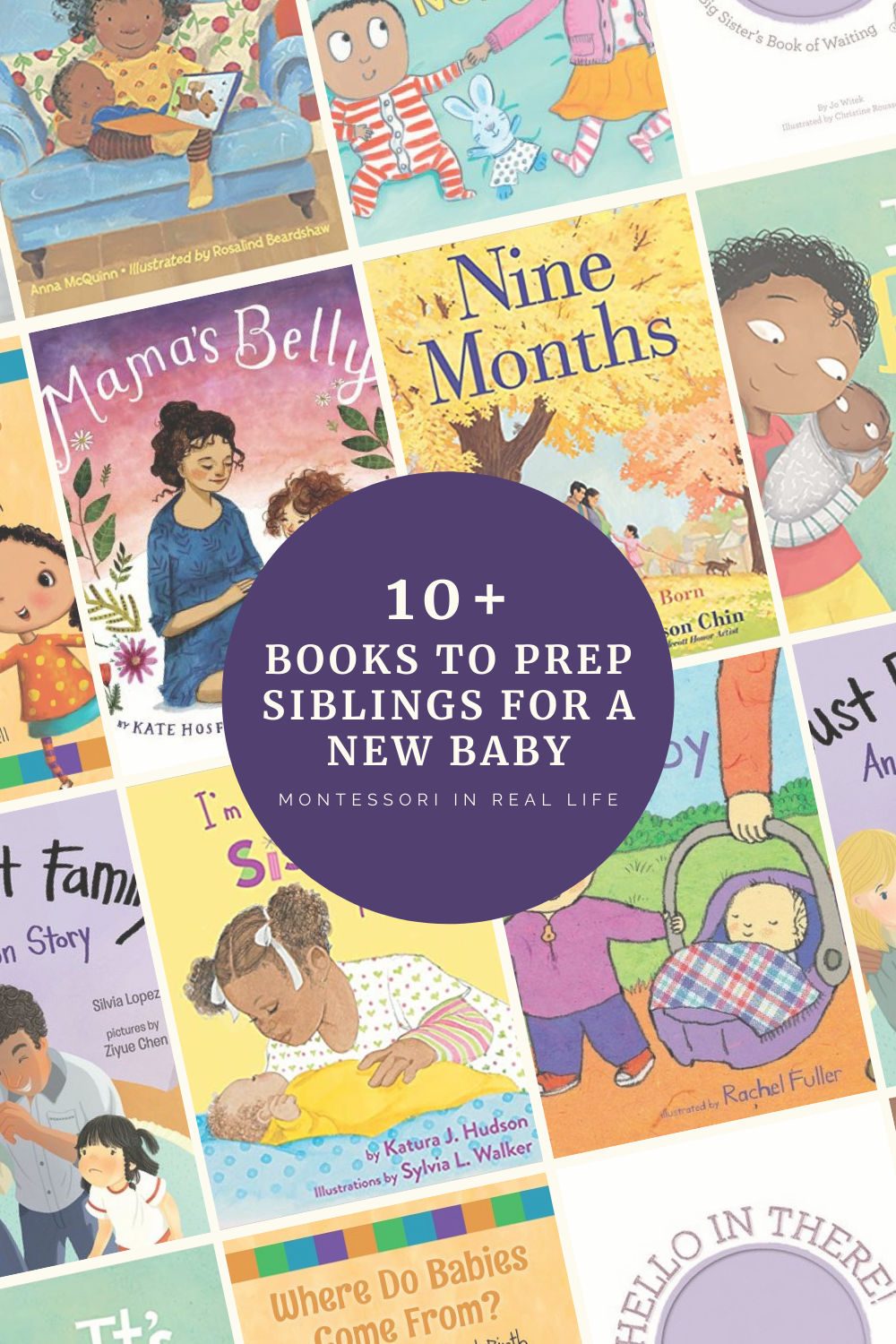Introducing New Materials to a Toddler
Montessori in Real Life
Just as important as the materials in the Montessori environment is the way in which we present those materials to the child. In an early childhood classroom (age 3-6), Montessori guides use a more formal method for teaching, called the Three Period Lesson. As I explain in my blog post about introducing new vocabulary, we often modify the three period lesson to a two period lesson for toddlers. In introducing new objects and vocabulary to D, I first label each object clearly and slowly. I then ask her (in various ways) to find each object (e.g. Can you put the eagle in the basket?” or “Where is the eagle’s beak?”) Unless I’m sure she knows the word, I do not ask her “What is this?” because it is often difficult and intimidating for newly verbal toddlers to answer, and makes the activity less enjoyable for her. I discuss other language activities in my previous blog post as well.
The three (or two) part lesson works well for some types of materials, such as labeling these forest animal figurines, but not others. With a toddler, lessons often aren’t formal, because they aren’t sitting still for long, and are usually eager to jump into trying it themselves. That being said, there are some general steps I take in introducing a new material, that seem to be fairly consistent across type of activity…
Set up the new material on a tray or in a basket so that it’s inviting and “incomplete”, e.g. puzzle pieces are out of puzzle or nesting cups are unstacked. (Or, if practical life, set up at her small kitchen or weaning table).
Bring D’s attention to the material. If she’s interested, I slowly model how it works/how it is to be used. (If she’s not interested, I wait for another time.) I use minimal words, so that the focus is on my hands, not my voice. It is difficult for toddlers to process both at the same time. For example, with the shape/color sorter above, I might point to the cylinder in my hand, label it “cylinder”, point to the cylinder inset, trace my hand around the circle of the cylinder and inset, and then slowly place the cylinder in the inset. I might say “The cylinder fits!” I would repeat with the remaining shapes and colors. Now that she can match the shapes, I might point out the size/color difference as well, but there’s no rush on this!
I “undo” my work, again slowly, placing each piece back on the tray or in the bakset. I might label with minimal words again, such as noting the color, shape, or a simple action “I put the triangular prism back in the basket!”
Once the material is set-up on the tray or in the basket, I give it to D to use and explore. At this point, I don’t interrupt. Sometimes she imitates my actions and is engrossed in the activity, and other times she uses the material in her own way, which is just fine. I let her play with it as she wishes to.
If she attempts to imitate the actions she saw me do, but struggles, I wait, and often she self-corrects (see note below regarding control of error). Or, if she signals that she wants help, I do show her again, or help guide her. I only intervene if she asks for me to though. I try to encourage her to figure things out for herself, so that she doesn’t come to rely on me doing things for her. Sometimes this means keeping a little distance while she works. This provides her the opportunity to feel confident and capable in her own abilities.
If she completes the work, but mixes pieces up or does it in the wrong order, I don’t fix it for her (unless she asks, as noted above). I let her “complete” the work as she sees fit. When she’s done playing with it, I might model it again correctly another time.
Note: many traditional Montessori materials include a built-in control of error. This means that the materials allow the child to self-correct because they provide instant feedback about whether it is completed correctly or not. A classic example is the knobbed cylinders. If a child places one cylinder in the incorrect place, he will not be able to fit all the cylinders into the block. This will allow him to re-arrange the cylinders in the block to ensure they all fit. This opportunity for self-correction provides toddlers (and older children) independence, curiosity, satisfaction, and confidence in their work.
Note: This post contains affiliate links. If you purchase a product through one of these links, you won’t pay anything extra, but I will get a small commission, which helps keep this blog going. Thanks for supporting Montessori in Real Life!
